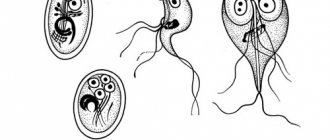Peculiarities
The thin mucous film lining the surface of the sclera is called the conjunctiva and is designed to moisturize the dome of the eyeball, as well as to protect the visual organ from pathogenic microflora and aggressive environmental influences. However, if the negative influence from the outside turns out to be quite strong, then the membrane becomes inflamed, revealing signs indicating a disease - conjunctivitis.
The disease can occur at any age, even in newborns when passing through the mother's birth canal if she is infected. The disease itself is not dangerous, but it has a high risk of infection and complications that arise in the absence of proper treatment.
Description of the disease
Conjunctivitis is one of the most common diseases in ophthalmology, which can occur in absolutely anyone, regardless of age and gender. Conjunctivitis is often diagnosed in infants from the first weeks of life.
Pathology can be suspected by redness of the eyes, swelling of the mucous membrane and the presence of purulent or mucous discharge. There are 3 main forms of the disease, depending on the nature of its development: allergic conjunctivitis, bacterial and viral. Any form requires mandatory medical intervention, since self-medication can cause irreparable harm to the health of the child’s eyes.
Causes
Conjunctivitis of a child's eyes often occurs through contact with insufficiently clean hands during play, etc. All a child needs to do is rub his eyes and the first symptoms will not be long in coming. The disease can occur either in an acute form (with a sharp clinical manifestation) or in a chronic form with a gradual increase in symptoms and periods of remission. Eye conjunctivitis in adults is characterized by the same types of pathogenesis.
According to the type of primary source, pathology is:
- viral;
- bacterial;
- allergic.
These forms most often cause conjunctivitis of the eyes in a child. However, the cause of eye conjunctivitis may lie elsewhere, for example, due to injury, the use of contact lenses, infection with fungal bacteria, or chlamydia.
Viral conjunctivitis of the eyes in a child occurs when viral infections such as influenza, herpes simplex, chickenpox, measles, etc. enter the body, including the mucous membrane of the organs of vision. The same cause of conjunctivitis of the eyes contributes to damage to the mucous membrane and other organs, causing the appearance of rhinitis, pharyngitis, etc. The incubation period of the disease is from 5 to 7 days.
Conjunctivitis of the eyes of a child, provoked by bacterial microorganisms, owes its occurrence to pathogens of the coccus group, tuberculosis bacillus, etc. Normally, these and other bacteria live on the mucous membranes, but are activated when the immune system is weak. This condition, with additional infection from the outside, is the cause of bacterial conjunctivitis of the eyes. The incubation period is usually one to two weeks.
Allergies are also a common cause of eye conjunctivitis in childhood. The disease may be a reaction to any allergen, or it may be a concomitant pathology of allergic pathogenesis: atopic dermatitis, hay fever, bronchial asthma. Allergic conjunctivitis of the eyes in a child can be year-round, seasonal, papillary, or specific.
When should you see a doctor?
Not all parents are seriously concerned about the appearance of conjunctivitis and prefer to treat it using “grandmother’s” recipes. Treatment with folk remedies is quite acceptable and in some cases turns out to be very effective, but it can only be used after consulting a pediatrician about the possibility of using a specific method and the absence of contraindications for this.
You should urgently visit an ophthalmologist if your child:
- has not reached one year of age;
- complains of pain and severe burning in the eye area;
- notes blurred vision;
- there is profuse lacrimation;
- I began to feel worse (a temperature appeared, my eyes turned red and watery).
The reason for going to the doctor is the formation of pustules, bumps and blisters on the surface of the eyelid or on the mucous membranes of the eyes.
Symptoms
The clinical picture of an ophthalmological disorder depends on the underlying cause that caused it. The symptoms will have features characteristic of this form of pathology.
Conjunctivitis of the eyes in a child, caused by viruses, is accompanied by swelling and redness of the conjunctiva, eyelids, dryness, and the appearance of follicles on the mucous membrane. Cough, runny nose, and hyperemia are often observed, which is typical for viral infections.
If the cause of eye conjunctivitis is bacterial pathogens, then the appearance of purulent discharge of a yellowish or greenish tint is inevitable. These discharges cause a lot of trouble for the baby especially in the mornings, when he cannot open his eyes due to gluing of eyelashes and eyelids.
Allergic conjunctivitis of the eyes in a child manifests itself quickly. The baby begins to intensively scratch his eyes, redness, pain, and copious secretion of tear secretion occur.
Against the background of a viral course of the disease, a bacterial complication often occurs, then the symptoms become mixed. Treatment of eye conjunctivitis in this case will be more extensive.
How does conjunctivitis manifest in children?
15.10.2021
Surely every mother has observed this condition in her child: swollen eyes , tears. What is this? One likely cause may be conjunctivitis. In order to understand this disease, you need to understand what the conjunctiva is. The conjunctiva is the group of cells that line the inside of the eyelid. This also includes the eyeball. Its significance is difficult to overestimate.
It is thanks to the conjunctiva the eye is protected from foreign objects, its surface is moisturized and allows us to see . Conjunctivitis is nothing more than inflammation of the conjunctiva.
How does conjunctivitis manifest in children?
There are 4 main signs of inflammation:
- swelling
- eyes turn red
- painful sensations
- dysfunction
The baby may complain that it feels like sand has been poured his eyes The ability to perceive light deteriorates, which affects vision . It may decrease during the period of illness. However, there is no need to be alarmed; after recovery, everything will be restored.
Two main types of conjunctivitis: infectious and allergic
An infection occurs when viruses or bacteria somehow penetrate the eye It is often not only the eyes . It also affects other organs: nose , throat , bronchi. The temperature with infectious conjunctivitis is usually within normal limits or slightly elevated. In the morning, after sleep, eyes often have difficulty opening due to the crust that has formed. The crust appears because pus leaks from the inflamed eyes .
Allergic. This type of conjunctivitis occurs due to allergies . It also causes the eyes vision to deteriorate . But the body temperature always remains normal, since there are no bacteria or viruses in this case. But even if the cause is an allergy , a child can scratch his eyes and get an infection. Then the appearance of pus is also quite possible.
Causes of childhood conjunctivitis
They may be different. The main reason is violation of personal hygiene requirements. In adults, conjunctivitis occurs less frequently, as they take this issue more seriously. Often the infection is transmitted in a children's group (for example, in a kindergarten) from one child to another.
When the protective properties of the conjunctiva are reduced, inflammation appears. This can happen with a cold, hypothermia, or if the mucous membrane is excessively dry. This happens when sitting at a computer monitor for a long time or in a very dry room.
Disease prevention
Of course, the main thing is to follow simple hygiene rules. It is necessary to teach your child to be neat from a young age. It is important for parents to understand that it is much easier to prevent a disease than to heart break later. So, what is important and necessary to do for prevention:
- monitor the baby's personal hygiene. His bed should always be clean, his toys washed
- wash your hands more often. When the child gets older, he himself must remember this important rule.
- ventilate the child's room. If the air is dry, use humidifiers
- make sure your baby eats properly
- take more walks in the fresh air with your child
Treatment of conjunctivitis
Self-medication is not the best option for this disease. You need to contact specialists. It is the doctor who will be able to determine the cause of the disease and prescribe the correct treatment.
Before going to the doctor, you need to be very strict about personal hygiene, carefully wipe your eyes with a cotton swab to remove pus. The tampon should be moistened with warm water or chamomile decoction. It is important to remember that you need to use a separate swab for each eye . There are a number of medications that are helpful in treating this disease. But they can only be used as prescribed by a doctor . Don't risk the health of your most precious possession. Do not self-medicate.
Published in Pediatrics Premium Clinic
Oftalmoferon
“Ophthalmoferon” for conjunctivitis is a drug that not all doctors have a positive attitude towards, indicating that it does not have a sufficient evidence base. The manufacturer positions these antiviral eye drops as the most powerful in the fight against conjunctivitis. "Ophthalmoferon" is suitable for adults and children, and is indicated during pregnancy. Eye drops destroy bacteria in the conjunctiva, on the membrane of the eye, and on the mucous membrane of the eyelids. Some ophthalmologists prescribe these drops to prevent viral eye diseases. The active substance of the product - interferon - relieves inflammation, stimulates the immune system, and kills viruses. "Ophthalmoferon" also contains acid with diphenhydramine, which works as an antiseptic. All components of these drops for conjunctivitis are safe for the body and are not absorbed into the blood. Remember that after opening the bottle, Oftalmoferon drops must be stored in the refrigerator.
Oftalmoferon
Firn M, Russia
adenoviral, hemorrhagic (enteroviral), herpetic conjunctivitis;
adenoviral, herpetic (vesicular, punctate, tree-like, map-shaped) keratitis; herpetic stromal keratitis with and without corneal ulceration; adenoviral and herpetic keratoconjunctivitis; herpetic uveitis and herpetic keratouveitis (with and without ulceration); dry eye syndrome; prevention of graft disease and prevention of relapse of herpetic keratitis after keratoplasty; prevention and treatment of complications after excimer laser refractive surgery of the cornea. from 232
647
- Like
- Write a review
Types of allergic conjunctivitis
The reaction can occur to different substances. Here are the most common factors that cause inflammation of the mucous membranes:
- Hay fever, or spring rhinoconjunctivitis, is an allergy to pollen from flowering plants. Occurs in the spring and summer season. Usually the reaction occurs to pollen from cereals, weeds and some trees (poplar, birch, alder).
- Reaction to secretions of various glands of domestic animals. Many people believe that allergies occur due to fluff or wool, but this is not true. Irritation can occur even when in contact with hairless cats - Sphynx cats.
- Food allergies. The most common type. Occurs on cereals, nuts, proteins and other products or their components. Symptoms in this case may be aggravated by a skin rash, upset bowel movements, and difficulty breathing as the throat swells.
- Reaction to certain medications.
- Insect allergy to insect bites, etc.
Any type of allergy manifests itself in children with irritation and inflammation of the eyes, since their mucous membrane suffers first. If the above symptoms appear, parents should promptly contact an ophthalmologist to determine the cause of the allergy and obtain a prescription for medications.
For the treatment of allergic inflammation of the eyes, children are prescribed drops that eliminate eyelid swelling and redness, for example, Vizin, antihistamines Allergodil, Alezastin, Olopatadine. All prescribed medications must be used strictly in accordance with the doctor’s instructions.
How to treat conjunctivitis.
August 17, 2021
7546
5
1
Content
- Symptoms of conjunctivitis
- Types of conjunctivitis
- How to treat conjunctivitis
- The most effective drops for conjunctivitis
- Ciprofloxacin-Optic
- Montevisin
- Levomycetin
- Opatanol
- Oftalmoferon
- Aktipol
- Drops for conjunctivitis for children
- Tsiprolet
- Diclofenac
- Vitabact
- Visine Classic
Conjunctivitis
is a common eye disease in which the mucous membrane of the eyeball, the inside of the eyelids and the sclera (the “white” of the eye) become inflamed.
Conjunctivitis usually does not pose a health risk and can go away on its own without treatment, but there are forms of conjunctivitis that cause complications or are contagious.
Diagnostic methods
Before treating conjunctivitis, it is necessary to identify what type of conjunctivitis is present in the child. To do this, first a history of the disease is collected, and then laboratory and ophthalmological examinations are prescribed:
- biomicroscopy of the eye;
- a smear from the conjunctiva followed by cytological examination in the laboratory;
- analysis for the level of IgE and eosinophils in the blood;
- skin allergy tests;
- tests for worms and dysbacteriosis;
- microscopic examination of tear fluid;
- bacteriological examination of discharged pus;
- scraping for enterobiasis.
If an allergic type of disease is suspected, the child is advised to consult an allergist, who will prescribe additional tests.








